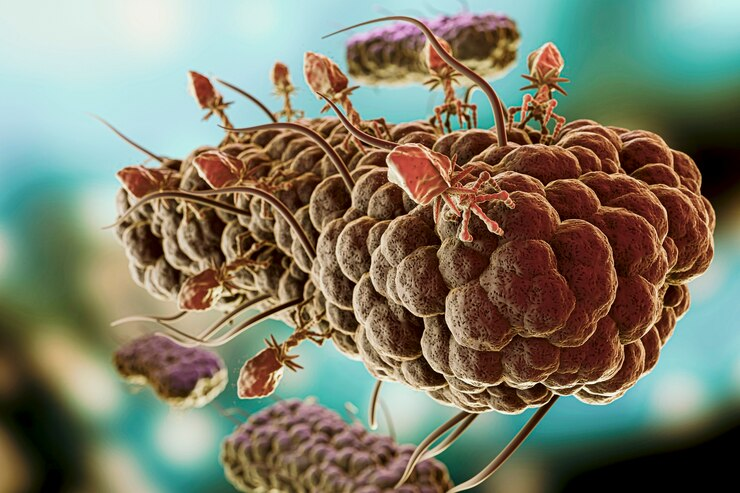Understanding Protists and Fungi
Protists constitute a diverse array of microorganisms primarily composed of eukaryotic cells. These organisms, whether single-celled or multicellular, elude traditional classification into the plant, animal, or fungal kingdoms. Instead, they carve a unique niche marked by their microscopic nature and astonishing diversity.
Protists inhabit diverse environments, from the depths of oceans and freshwater ecosystems to terrestrial soils and even the bodies of other organisms.
Fungi, in stark contrast, form an autonomous kingdom of life, separate from plants, animals, and protists. Characterized by chitinous cell walls and a heterotrophic mode of nutrition, fungi are renowned for their role as decomposers, crucial for breaking down organic matter within ecosystems.
The fungal kingdom encompasses a variety of forms, including yeasts, molds, and mushrooms, each contributing significantly to ecological and economic processes.
Similarities Shared by Protists and Fungi
Despite their distinct classifications, protists and fungi exhibit several intriguing similarities:
- Eukaryotic Cells: Both protists and fungi consist of eukaryotic cells, featuring a nucleus and membrane-bound organelles. This fundamental cellular structure distinguishes them from prokaryotic microorganisms like bacteria;
- Microscopic Nature: The majority of protists and fungi exist on a microscopic scale, although exceptions exist. Their diminutive size necessitates microscopic observation, rendering them invisible to the naked eye;
- Diversity Abounds: Both groups display astonishing diversity in terms of species and forms. Protists encompass a broad spectrum of organisms, including algae, protozoa, and slime molds, while fungi manifest in various guises, including yeasts, molds, and mushrooms;
- Ecological Significance: Protists and fungi play pivotal roles in various ecosystems. Protists contribute to nutrient cycling, especially in aquatic environments, where some function as primary producers through photosynthesis. Fungi, conversely, serve as integral decomposers, responsible for breaking down organic matter and recycling nutrients in terrestrial ecosystems.
Contrasting Protists and Fungi
To gain a deeper understanding of the disparities between protists and fungi, let’s delve into some key distinctions:
- Nutritional Mode: Protists may adopt either autotrophic (photosynthetic) or heterotrophic (consuming other organisms) nutrition. In contrast, fungi exclusively exhibit heterotrophic tendencies, relying on external sources for sustenance;
- Cell Wall Composition: Protists often possess cell walls composed of cellulose or alternative materials, whereas fungi boast chitinous cell walls;
- Motility: Many protists exhibit motility, employing structures such as flagella or cilia for movement. Fungi, in general, lack motility and depend on growth and expansion for mobility;
- Reproductive Strategies: Protists employ a diverse array of reproductive methods, including binary fission, multiple fission, and sexual reproduction. Fungi primarily propagate through the formation and dispersal of spores.
Intriguing Facts About Protists and Fungi:
- Protists: Oxygen Producers: Marine protists, particularly phytoplankton, make substantial contributions to Earth’s oxygen production through photosynthesis;
- Fungi as Environmental Indicators: Specific fungi serve as bioindicators, aiding in the assessment of environmental health. Their presence or absence can provide insights into pollution levels and ecosystem alterations;
- Lichen Symbiosis: Lichens, unique symbiotic organisms comprising a fungus and a photosynthetic partner (typically an alga or cyanobacterium), flourish in extreme environments, from deserts to Arctic tundras;
- Fungi in Medicine: Fungi have yielded crucial compounds for medical applications, with penicillin, the pioneering antibiotic, being a notable discovery derived from the fungus Penicillium.
Uncover how fungi compensate for their lack of chlorophyll Fungi Lack Chlorophyll: Explore Their Nutritional Strategies
Conclusion
Our exploration of protists and fungi underscores the pivotal roles these microorganisms play within ecosystems and their contributions to our comprehension of life on Earth. The microscopic realm, often concealed from our unaided vision, conceals a trove of mysteries and marvels that continue to captivate the scientific community and enthusiasts alike.
As we delve deeper into the study of protists and fungi, we uncover not only their ecological significance but also their potential for technological and scientific advancements. These microscopic organisms continue to inspire researchers, from biotechnologists to ecologists, and offer new insights into fields as diverse as medicine, agriculture, and environmental science.
Protists, with their remarkable diversity and ecological significance, participate in nutrient cycling, oxygen production, and the foundation of aquatic food chains. They serve as a poignant reminder of the interconnectedness of life, emphasizing the vital role even the tiniest organisms play in preserving ecological equilibrium.
Fungi, as heterotrophic decomposers, hold the esteemed position of recyclers within the natural world. They partake in the decomposition of fallen leaves, deceased trees, and the remnants of organisms, thus replenishing essential nutrients within the soil. Fungi’s impact extends to agriculture, medicine, and biotechnology, continually providing invaluable insights for scientific research.
Whether you are a student seeking to complete a worksheet, a researcher charting new frontiers, or an individual harboring a general curiosity about the natural world, the study of protists and fungi presents a portal into the captivating universe of microorganisms. As we expand our understanding of these minuscule life forms, we garner a deeper appreciation for the intricate tapestry of life sustaining our planet.
Therefore, as you embark on your journey into the realm of protists and fungi, remember that even within the most diminutive organisms lies a realm teeming with wonder, complexity, and significance. Maintain your curiosity, continue your exploration, and remain in awe of the concealed treasures within the microbial domain.

